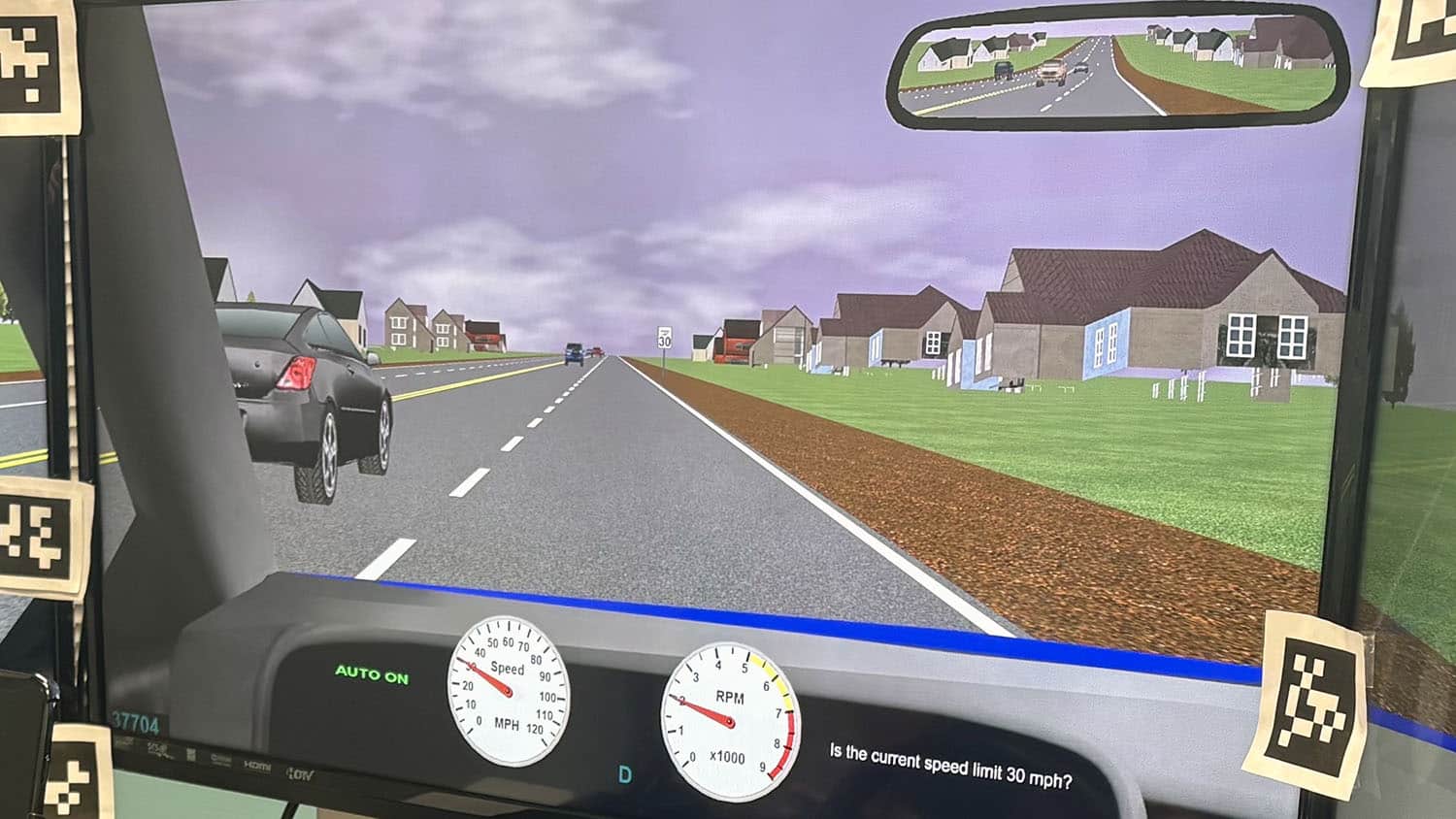How Simple Prompts Can Make Partially Automated Cars Safer

For Immediate Release
A new study finds that prompts do a good job of getting drivers to engage with their environment and take over control of the vehicle when necessary while using partially automated driving systems – with one exception. If drivers are deeply distracted, these system-generated prompts have little or no effect.
Partially automated driving systems – such as adaptive cruise control and technologies that keep a car in its lane or automate lane changes – are increasingly common in new vehicle models. However, these technologies do not allow a car to drive itself.
“Drivers still need to be aware of their surroundings and be able to take control of the vehicle at any time, in order to deal with system failures or other unexpected situations,” says Jing Feng, corresponding author of a paper on the work and a professor of psychology at North Carolina State University. “Ensuring that drivers are engaged and able to assume control of the vehicle is a significant challenge.”
“Our work here focused on assessing whether conversational prompts from the partially automated system are effective at keeping drivers engaged and, by extension, better able to take control of the vehicle in a timely way,” says Xiaolu Bai, first author of the paper and a Ph.D. student at NC State.
In this context, a conversational prompt consists of an audio cue – such as a beep – and a text message asking the driver to answer a question about the driving environment. For example, “Is the speed limit still 55 miles per hour?” or “Is the vehicle behind you following at a safe distance?”
To assess the effectiveness of conversational prompts at maintaining driver engagement, the researchers conducted two experiments.
In the first experiment, the researchers recruited 24 study participants. Using a vehicle simulator, all 24 participants went on six “drives.” During some of the drives, participants received no prompts. During some of the drives, participants received driving-oriented conversational prompts. And during the remaining drives, participants received conversational prompts unrelated to driving, with questions such as “Did you eat breakfast this morning?” In all six drives, the study participant was required to take over the vehicle at some point.
In the second experiment, the researchers recruited 24 different study participants. The participants went on the same six “drives” under the same conditions. However, in the second experiment, the study participants were also offered a cash reward for solving anagrams on their phone while driving.
“We asked the participants in Experiment 2 to solve anagrams because that is a non-driving-related task that is cognitively demanding,” Bai says. “And it made a significant difference.”
The researchers found that study participants in Experiment 1 did the best job of taking over the vehicle promptly when they were receiving and interacting with driving-related conversational prompts. However, even the conversational prompts unrelated to driving improved performance when compared to study participants receiving no prompts at all.
But in Experiment 2, when participants were engaged in a cognitively demanding task, driver performance suffered across the board – and the prompts made virtually no difference.
“Processing driving-related information is clearly valuable at helping maintain driver engagement,” says Feng. “However, our findings also underscore the importance of having drivers maintain the proper cognitive workload when driving with partially automated systems.
“If the cognitive workload is too high, as in Experiment 2, drivers are too distracted to engage effectively with driving tasks and responsibilities,” says Feng. “But if the workload is too low, drivers get bored. That is likely why, in Experiment 1, even prompts that had nothing to do with driving improved driver performance; those prompts helped maintain the proper workload.”
“A clear takeaway message here is that incorporating driving-related prompts into partially automated driving systems can improve driver performance at taking the wheel when necessary, which has real-world ramifications for traffic safety,” Bai says.
“Another takeaway message is that even these prompts are insufficient to improve driver performance when drivers are cognitively engaged in demanding non-driving-related tasks,” Bai says. “Additional research is needed to see what, if anything, can be done to mitigate these situations.”
The paper, “Awaking the disengaged: Can driving-related prompts engage drivers in partial automation?,” is published in the journal Human Factors.
-shipman-
Note to Editors: The study abstract follows.
“Awaking the disengaged: Can driving-related prompts engage drivers in partial automation?”
Authors: Xiaolu Bai and Jing Feng, North Carolina State University
Published: Jan. 22, Human Factors
DOI: 10.1177/00187208251314248
Abstract:
Objective: This study explores the effectiveness of conversational prompts on enhancing driver monitoring behavior and takeover performance in partially automated driving under two non-driving-related task (NDRT) scenarios with varying workloads.
Background: Driver disengagement in partially automated driving is a serious safety concern. Intermittent conversational prompts that require responses may be a solution. However, existing literature is limited with inconsistent findings. There is little consideration of NDRTs as an important context although NDRT involvement is ubiquitous. A method is also lacking to measure driver engagement at the cognitive level, beyond manual and visual engagements.
Methods: Participants operated a partially automated vehicle in a simulator in six predefined drives. In each drive, participants either received driving-related prompts, daily-conversation prompts, or no prompts, with or without a takeover notification. The first experiment instructed participants to engage in NDRTs at their choice and the second experiment incentivized solving demanding anagrams with monetary rewards.
Results: When participants were voluntarily engaged in NDRTs, answering driving-related prompts and receiving takeover notifications improved their monitoring behavior and takeover performance. However, when participants were involved in the more demanding and incentivized NDRT, answering prompts had little effect.
Conclusion: The study supports the importance of both maintaining appropriate workload and processing driving-related information during partially automated driving. Driving-related prompts improve driver engagement behavior and takeover performance, but they are not robust enough to compete with secondary tasks that have high motivational appeals and cognitive demands.
Application: The design of driver engagement tools should consider the workload and information processing mechanisms.


